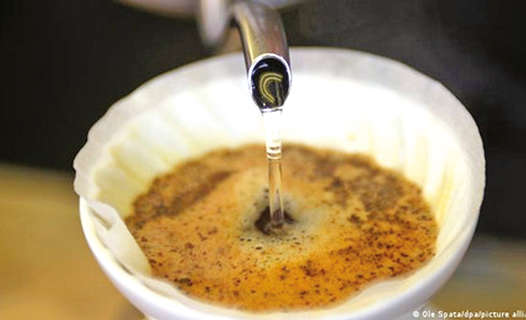Green movement: How massive is one’s water footprint?
Some 2 billion people lack access to safe drinking water, according to the UN, while about 2.3 billion live in water-stressed countries.

How much water does it take to make a cup of coffee? Hint: it’s much much more than a single cup. One cup of coffee requires 132 litres (35 gallons) of water, according to calculations by the Water Footprint Network, a platform that aims to advance the sustainable use of fresh water.
This takes the entire production chain into account, including the water that goes into growing the coffee tree, processing the beans, packaging them and transporting them to the supermarket.
It’s what’s known as “hidden” or “virtual” water — we don’t see it being used, but it plays a major role in the production of just about everything we consume, including energy, food, clothing, smartphones, cars and coffee.
“Everything needs water to be produced,” Ertug Ercin, a senior researcher at the Water Footprint Network, told DW.
“There’s a significant amount of water used particularly for food and beverage products. And this is actually your water footprint, which is the total amount of water that is needed for your consumption patterns.”
Ultimately, the water that comes out of our taps at home — our “direct” consumption — only accounts for a tiny share of our overall footprint once our indirect or “virtual” water use is added.
Fresh water is a finite resource. Of the estimated 1.386 billion cubic kilometers (333 million cubic miles) of water on earth, just 3% is fresh water.
Only around 1% is available to us because the rest is stored away in glaciers or ice caps. This water is coming under increasing pressure from climate change and the needs of a growing global population.
Rising demand for water in agriculture, industry and households has led to fears about water scarcity in some parts of the world.
Some 2 billion people lack access to safe drinking water, according to the UN, while about 2.3 billion live in water-stressed countries.
“We are in a crisis,” said Ercin. “This is alarming. At the same time, availability patterns are changing. We will not find water where we need it the most, when we need it most.” Preventing severe drought in water-stressed areas is only going to be possible if water is used with more care and efficiency. Which brings us back to water footprints.
The water footprints of different countries vary significantly, depending on industrial and agricultural activities and the population’s consumption patterns. In the US, for example, the average water footprint per person per day is around 7,800 litres, twice the global average. Direct consumption inside homes only makes up about 3.5% of that, or 270 litres per person per day.
Germans use roughly 125 litres per person per day, but that rises to 3,900 litres when “virtual” water is taken into account. In India, meanwhile, an individual’s daily water footprint is around 3,000 litres, while in China it’s 2,934 litres.
According to Ercin, global water use could climb dramatically if India and China start consuming on the same level as people in Europe and the US. “In the US, there’s a big meat sector, there’s a big consumption sector… there’s a big purchase power there,” he said, adding that India’s less meat-oriented diet is one reason for its lower number.
Agriculture is responsible for more than 70% of global water consumption. Products that come from crops or from animals that feed on crops, such as our food and clothing, need a lot of water.
Meat products and nuts are big water users. According to the Water Footprint Network, it takes more than 15,400 litres of water to produce a kilogram of beef, for example.
A kilo of nuts needs 9,063 litres, while vegetables are at the lower end of the scale, with 322 litres per kilogram.
There have been calls for companies to use water footprint labels, similar to nutritional labels on food items, to boost public awareness about the water behind products. But so far there’s been no agreement.
Visit news.dtnext.in to explore our interactive epaper!
Download the DT Next app for more exciting features!
Click here for iOS
Click here for Android



